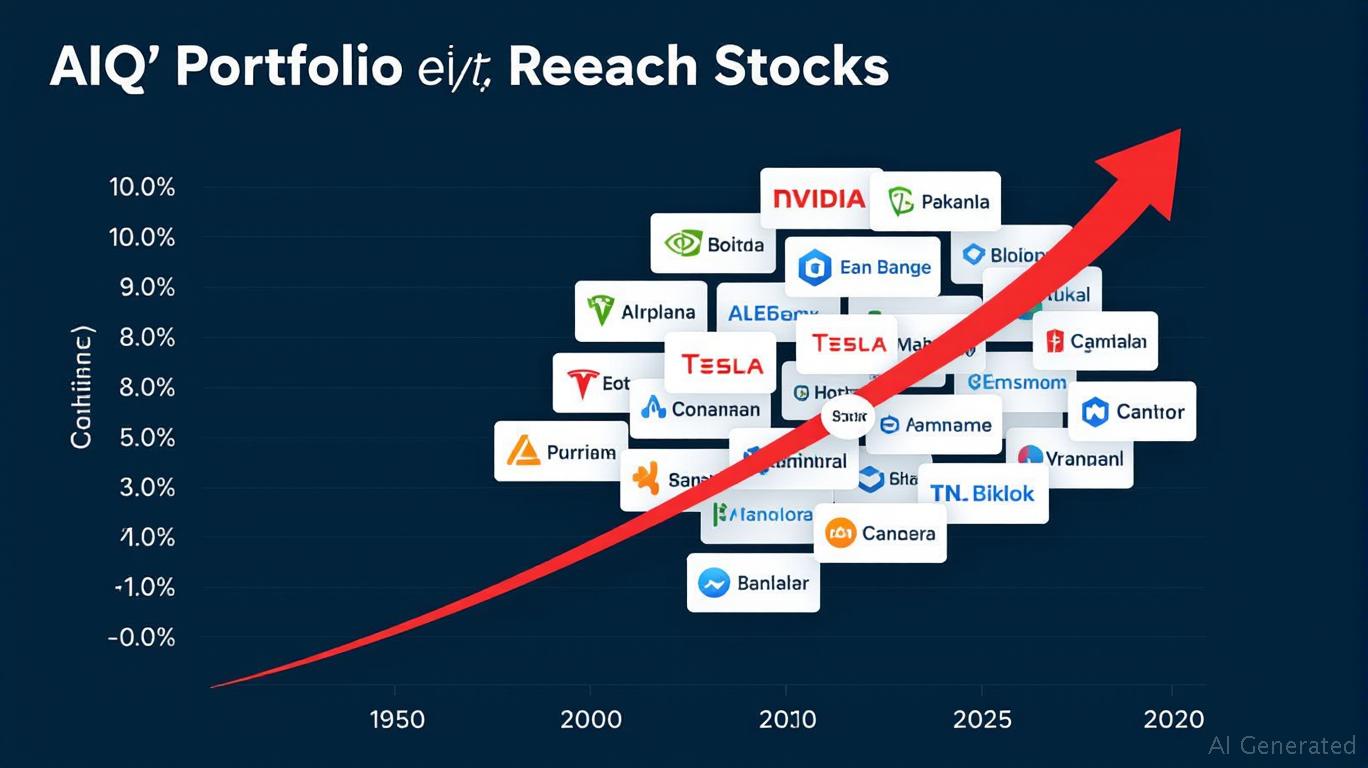AIQ's Tech Dependence: A Call for Diversification in an AI-Driven World
The rapid ascent of artificial intelligence (AI) has turned ETFs like the Global X Artificial Intelligence & Technology ETF (AIQ) into darlings of growth-oriented investors. Yet beneath its promise lies a critical flaw: AIQ's overexposure to the technology sector, which risks its standalone value during market corrections and limits its utility as a true diversifier. This article explores how AIQ's reliance on concentrated tech exposure undermines its long-term appeal and offers strategies to capitalize on AI themes while mitigating overcrowding risks.

The Tech Overhang: AIQ's Correlation Conundrum
AIQ's sector allocation as of late 2024 reveals a stark reality: 67% of its holdings are concentrated in the Information Technology sector, with significant stakes in consumer discretionary and communication services (see table below). This heavy weighting mirrors broader tech indices like the Nasdaq-100, creating a high correlation coefficient. While this alignment boosted returns during tech's 2023–2024 rally—AIQ gained 21.29% annually—the fund's performance tanked in tandem with tech stocks during recent corrections.
The problem? Correlation kills diversification. When tech-heavy sectors face headwinds—whether from rising interest rates, regulatory scrutiny, or valuation pressures—AIQ's lack of exposure to non-tech sectors exacerbates volatility. Investors chasing AI exposure through
are, in essence, doubling down on a single industry bet.Why Tech Dominance Undermines Standalone Value
AIQ's mandate to track the Indxx Artificial Intelligence & Big Data Index demands heavy allocations to companies like
(AI hardware), (AI-driven platforms), and (cloud infrastructure). While these firms are pivotal to AI's growth, their inclusion means AIQ's returns are inextricably tied to the tech sector's health. Consider these risks:1. Sector overcrowding: AIQ's top 10 holdings account for 33.57% of its assets, creating concentration risk. A misstep by NVIDIA or could disproportionately drag down the fund.
2. Geopolitical spillover: Tech stocks are vulnerable to trade wars, data privacy laws, and supply chain disruptions. AIQ's geographic focus on U.S. and Canadian firms leaves it exposed to these risks without hedging.
3. Valuation bubbles: Many AIQ holdings trade at premium multiples. A correction in high-growth tech stocks could leave the ETF lagging safer, diversified alternatives.
Diversification: The Path to Sustainable AI Exposure
Investors seeking to capture AI's growth without overexposure to tech must look beyond concentrated ETFs like AIQ. Here's how to optimize:
1. Layer in Non-Tech AI Plays
AI's applications span industries from healthcare (e.g., diagnostics) to manufacturing (predictive maintenance). ETFs like the First Trust Artificial Intelligence ETF (FAIA) or Innovator Global Artificial Intelligence & Technology ETF (AIC) offer broader sector exposure, including healthcare and industrials. For instance, FAIA allocates 27% to healthcare stocks, reducing reliance on tech's swings.
2. Embrace Geographical Diversification
AIQ's U.S.-centric holdings (over 80% in North American firms) neglect opportunities in Europe's AI infrastructure push or Asia's semiconductor boom. The iShares MSCI Global Artificial Intelligence ETF (AI) invests globally, with 22% in European firms and 18% in Asia-Pacific. This spreads risk and taps underappreciated markets.
3. Use Low-Correlation Alternatives
Pair AI exposure with assets that behave differently in tech downturns. Consider:
- Quantum computing stocks (e.g.,
- Cloud infrastructure ETFs (e.g., Virtu Financial's Cloud ETF (CLOUD)) to capture AI's data needs without pure-play tech risk.
- Small-cap AI startups via niche ETFs like Global X Robotics & Artificial Intelligence ETF (BOTZ), which holds companies like and Boston Dynamics.
4. Rebalance Proactively
Set stop-loss thresholds on tech-heavy ETFs like AIQ and rebalance into defensive sectors (e.g., utilities, consumer staples) during corrections. For example, Vanguard Utilities ETF (VPU) offers steady dividends to offset tech volatility.
Conclusion: AI's Future Is in Balance
AIQ remains a valid tool for investors fully committed to tech's growth narrative. However, its correlation-driven risk profile makes it ill-suited for portfolios needing true diversification. By blending AIQ with global, cross-sector, and low-correlation alternatives, investors can harness the AI revolution while shielding themselves from tech's cyclical pitfalls.
The lesson? AI is a theme, not a sector. Success lies not in chasing the next hot stock but in building a portfolio that thrives regardless of which industries lead the charge.
Investors: Diversify your AI exposure—or risk riding a single, shaky wave.
Data as of November 30, 2024. Past performance does not guarantee future results.
Sign up for free to continue reading
By continuing, I agree to the
Market Data Terms of Service and Privacy Statement

Comments
No comments yet